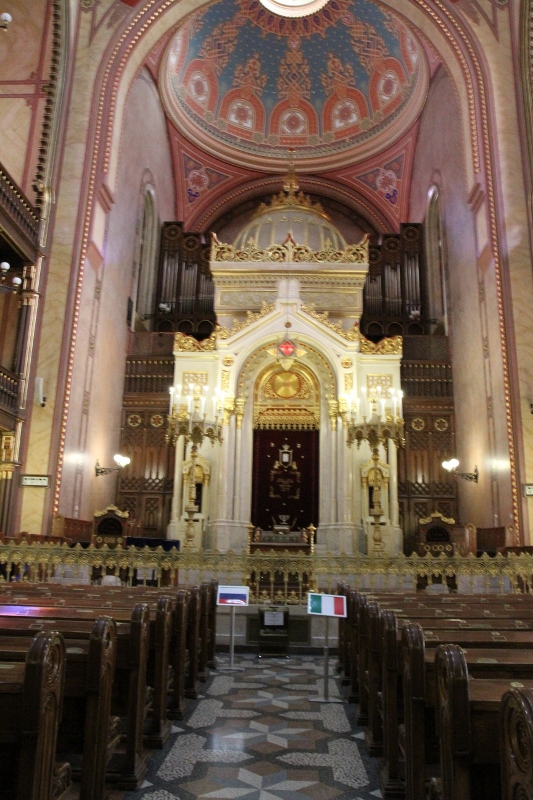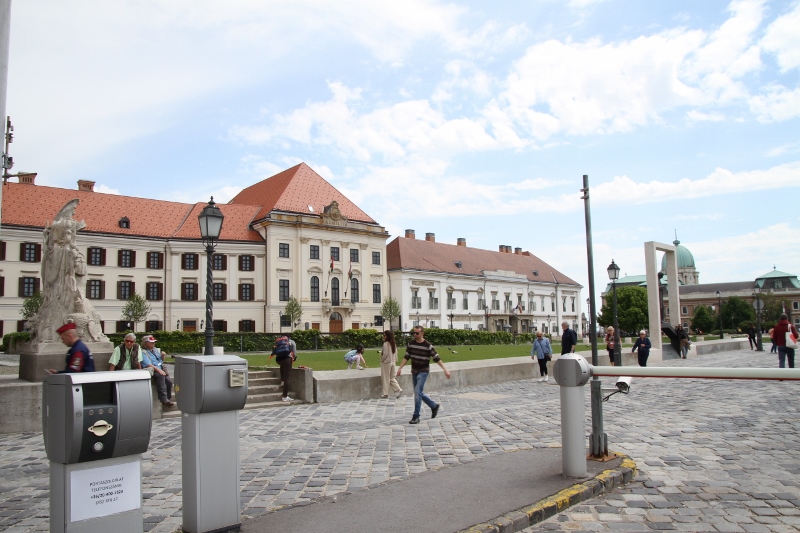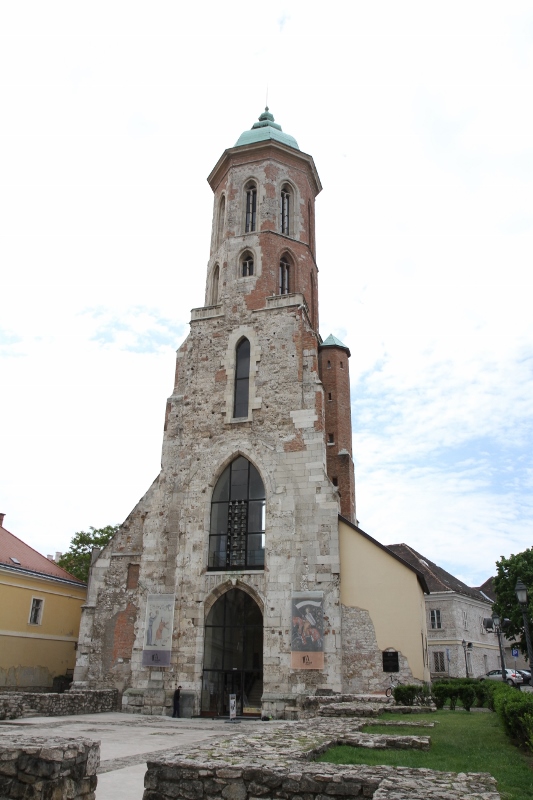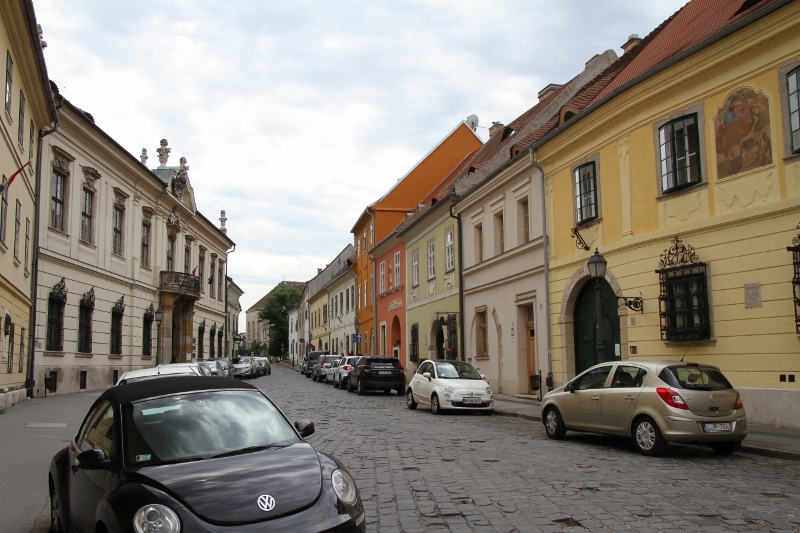What a marvelous city! Our trip through Eastern Europe was planned to see places, for the most part, we had heard about but never visited. Our expectations of Budapest were not well formed, maybe just about Goulash, and the Danube River, which was not blue by the way. But the city had many wonderful surprises in store.
The city’s history stretches back before Roman times, when the river formed a boundary between the “civilized” world and the “barbarians”, the people consider its beginning from the Magyar settlement in 896. The people are proud of their heritage and celebrate it in monuments and festivals with many monuments and buildings dating from the millennium celebrations of 1896.
The city, one of the most populous in the European Union, is actually two cities situated on either side of the Danube River. On one side is the hilly Buda and on the other is Pest. Our hotel, in the Gresham Palace, was on the Pest side at the foot of the historic Chain Bridge, which was the first to join the two sides, in 1849.

The Gresham Palace 
On the Chain Bridge. 
The Chain Bridge from Buda.
The central area of the city along the Danube River is classified as a UNESCO World Heritage Site and has many notable monuments, include the Hungarian Parliament, one of the largest in Europe, Buda Castle, Fisherman’s Bastion and Matthias Church.
Our first evening in Budapest was a wonderful walk to the Buda side for dinner. After getting lost, we turned on Google maps to locate our destination, a wonderful little bistro in the historic area just down the street from Matthias Church. We had to sample the local fare; a first course of Goulash soup followed by Chicken Paprikash. Both were delicious but unfortunately the waiter said the recipes were a family secret, though he did share that they used beef cheeks in the Goulash.

Street in Buda, that is the Archives at the end of the street. 
Goulash 
Contented
Our first full day started with our guide Sofie touring the Pest side of the city. We started in St. Stephen’s Basilica, dedicated to the king of Hungary in the 10th century who converted the Magyars to Christianity. His right hand is housed in the reliquary.
Our next stop was to tour the Opera House, built in 1884. Unfortunately, the renovations underway limited what we were able to see. But it is full of history and stories. We were told that Franz Joseph, the Emperor, came to the opening but never returned because, though smaller, he thought it more beautiful than the one in Vienna. We were able to enter through the Royal entrance, and of course, my Queen, Cathy, ascended the stairs reserved for the Empress.
Next, we checked out the Millennial Underground Railway, the second oldest metro line in the world. It was built under the main thoroughfare, Andrassy Ut, specifically to transport people to the Budapest City Park for the millennial celebrations in 1896.
The City Park was the site of the worlds fair. At its entrance is Heroes Square, with its statues of the many rulers of Hungary. The square is dominated by the central column, at the top of which is the Archangel Gabriel who holds the Hungarian Holy Crown. At the base of the column is a group of the seven Magyar chieftains who led the Hungarian people into the Carpathian basin. In front of the column is the Memorial Stone of Heroes.

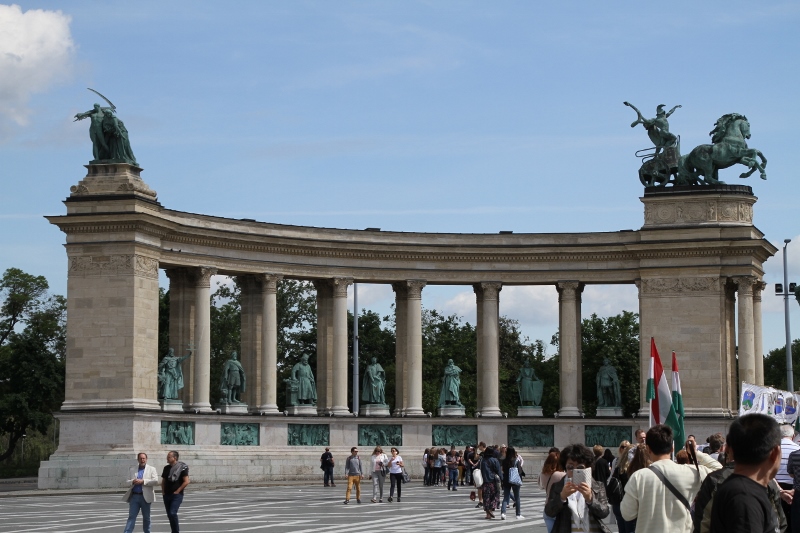
The kings 
Memorial to the Heros 
The Chieftains
The park itself has many buildings left from the time of the worlds fair. There is a replica of a Transylvanian castle, a man-made lake where people could enjoy boating, an ice-skating ring and a bath house, where people come to enjoy one of the many hot springs in the city.





The Bath house 
Pools in the Bath House 
After visiting the market and sampling more of the local fare, Cathy and I spent the rest of the day exploring on our own. The city has many fanciful monuments as well as several paying homages to those who lost their lives in the holocaust.

The Market Building 
In the Market 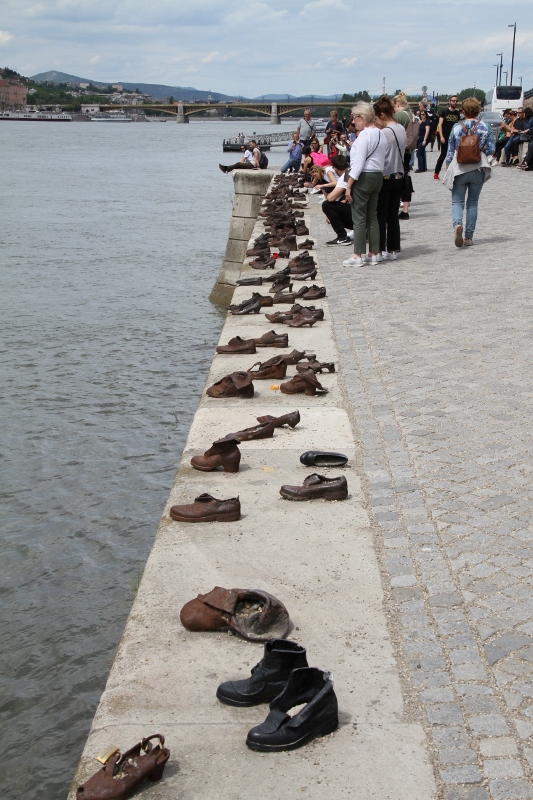
Monument 

Parliament building 
Front of the Parliament 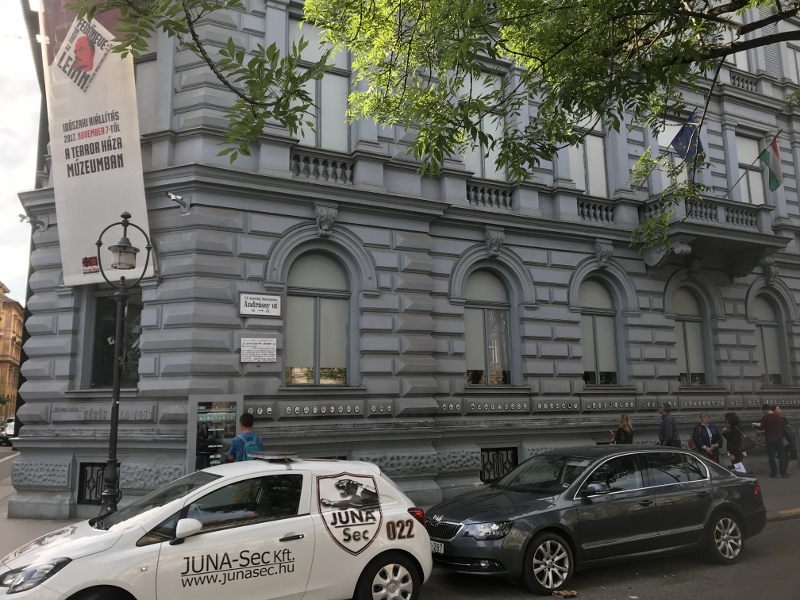
Terror museum, former HQ of the secret police. 
The Iron Curtain 
Piece of the Berlin Wall 
The Fat Police Man – on the left obviously
Our next day began with a stop at the Dohany Street Synagogue. The complex consists of the Great Synagogue, the Heroes’ Temple, the graveyard, the Memorial and the Jewish Museum which was built on the site on which Theodor Herzel’s house of birth stood. It is the largest Synagogue in Europe built in a Moorish revival style. The cemetery adjoining the building, unusual for a Jewish Synagogue, is the site of the mass grave of over 2,200 who died in the Ghetto in 1944-1945.
In the rear courtyard is the Raoul Wallenberg Holocaust Memorial Park. It holds the Memorial of the Hungarian Jewish Martyrs that resembles a weeping willow whose leaves bear inscriptions with the names of victims. There is also a memorial to Wallenberg and other Righteous Among the Nations.
After this very moving moment, we proceeded to the Buda side of the city to the Fisherman’s Bastion and the older historic areas around Matthias Church. The area affording beautiful views of the river and the Pest side of the city.
One of the biggest surprises in Budapest was meeting Brookfield friends in Buda. While standing outside a shop, I looked up and standing next to me was Al Uziel! Inside was his wife Barbara. What a small world we live in. Wonderful to see friends here and later that evening we joined them for a drink.
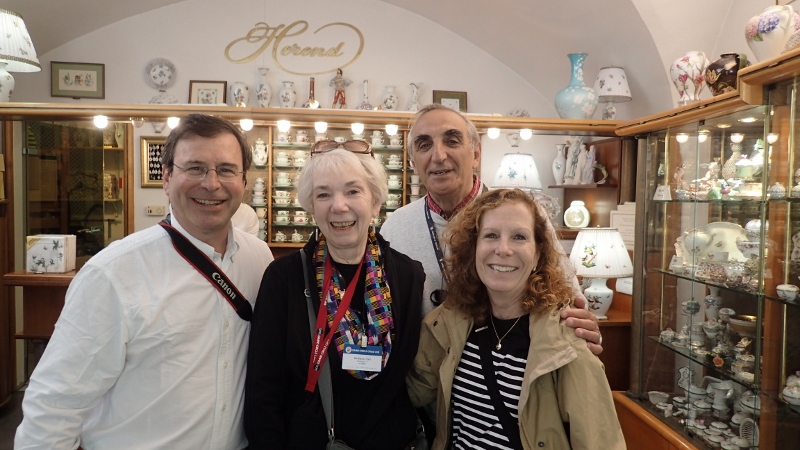
Next it is on to Vienna!














